Sichuan Takin Profile
The Sichuan takin is a mammal that is similar to sheep and goats. However they are a large and muscular animal, with horns and a bear-like tail.
They are also known as the Tibetan takin and are a subspecies of the takin a ‘goat-antelope’, and native to Tibet and some provinces of China.
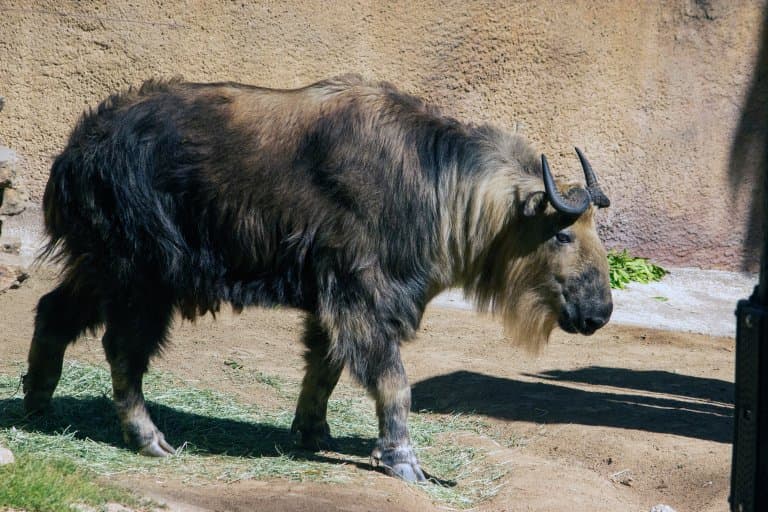
Sichuan Takin Facts Overview
| Habitat: | Rocky Mountains, forested valleys and barren grasslands |
| Location: | Tibet and some areas of China |
| Lifespan: | Up to 18 years, sometimes 20 if in captivity |
| Size: | 5-7 ft in length and 3-4 ft tall |
| Weight: | 150-400kg |
| Color: | Blonde coats or dark brown with two black horns and a black muzzle |
| Diet: | Herbivores – grass and leaves. In zoos, they have a diet of fruit and vegetables |
| Predators: | Snow leopards and wolves |
| Top Speed: | 10kph |
| No. of Species: |
1 (1 of 4 subspecies of takin) |
| Conservation Status: |
Vulnerable |
The Sichuan takin can live up to 18 years in the wild, and some have lived up to 20 years in captivity.
They live in dense bamboo forests alongside Giant Pandas, and migrate to the mountains in spring. In winter months, the Sichuan takin travels down to lower grounds.
The takin biology is perfect for acclimatising to different weather conditions. In the winters a secondary fluffy coat is grown and keeps them warm until they shed it for the summer months. They also have large sinus cavities to warm air as it is inhaled into the lungs and an oily skin that acts as a natural rain coat.
The Sichuan takin is generally a slow-moving animal, but they have quick reactions when they sense danger, can jump from rock to rock and are able to make a fearsome roar and bellow.
The predators of a Sichuan takin are snow leopards, wolves and bears. However, a snow leopard is unable to take down an adult takin and only target Sichuan young.
Sichuan takins are considered a national treasure in China and are highly protected with laws to prevent hunting but in the remote areas, there is no enforcement or knowledge of the conservation laws which leads to overhunting and takins hunted for their meat. China has two reserves created for the protection of Sichuan takins.
Overhunting is a significant danger to the takins but the main reason for their vulnerability is the reduction and loss of their habitats due to farming and road construction. Some research indicates that climate change is also affecting the wildlife and habitats of the takins.
Interesting Sichuan Takin Facts
1. They live at altitudes above 14,000 feet (4,500 meters)
Sichaun takins are amazing climbers, their tough flexible hooves provide grip for climbing steep mountains and rocky paths.
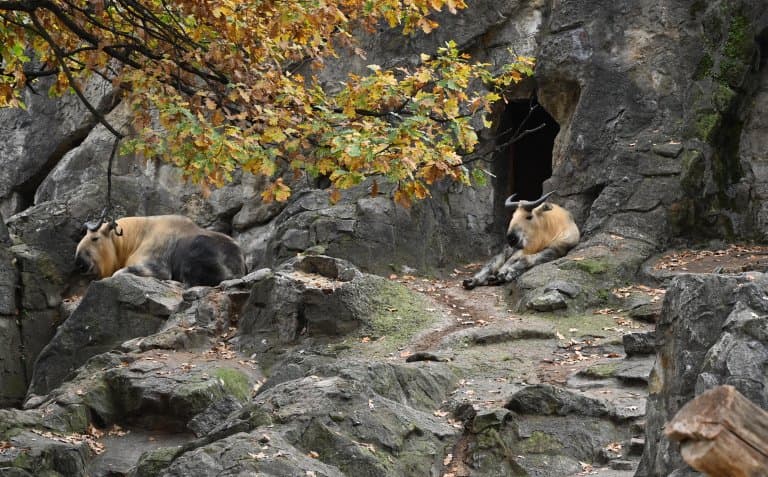
2. Takins have no skin glands
Sichuan takins have no skin glands, but can still produce an oily substance that lubricates their skin. This acts as a natural raincoat in storms and poor weather.
2. Their shiny black horns grow up to 60cm (35in)
Alongside their powerful frame this means they have few natural enemies other than bears, wolves and snow leopards.
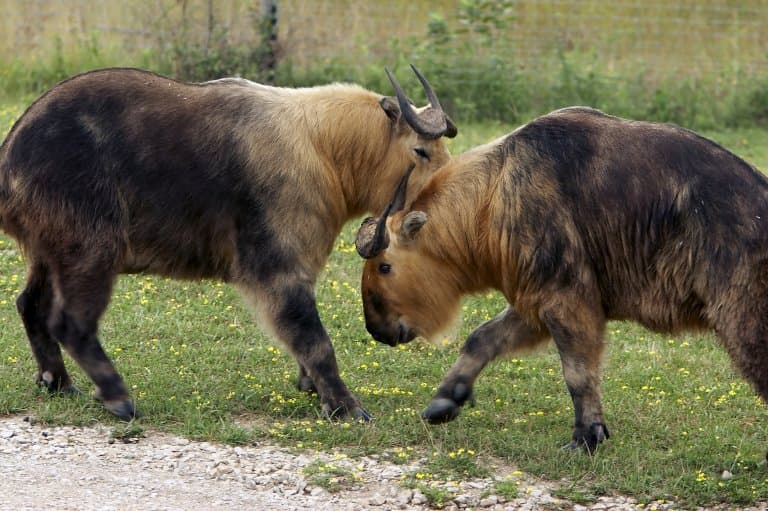
Male bulls use them for butting heads in courtship battles, similar to sheep.
3. The Sichaun takin can stand upright on their hind legs
They perform this trick to allow them to easily reach leaves and vegetation on higher branches while eating.
4. The size of a takin herd varies between seasons
In the warmer months, a Sichuan takin herd can have up to 300 members. However, in winter months, when the food supply is drastically reduced the herd divides into smaller collections of 10-30 members.
5. They only birth one child
Bull takins meet up with herds for short periods in the year despite being solitary animals. They use this time to reproduce and find a mate who gives birth to a single kid usually in spring.
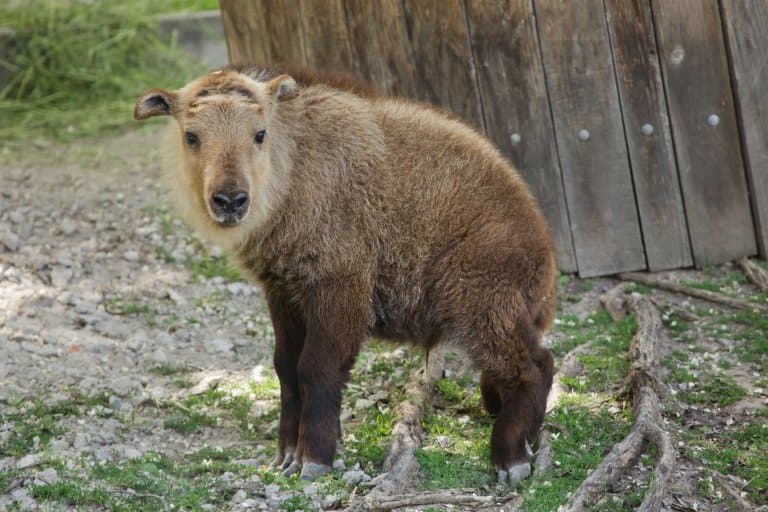
6. Sichaun takin young are darker than the adults
A takin young has a darker coat at birth to camouflage them from predators.
They stop nursing around 2 months, but tend to stay close to the mother until another calf is born. Their horns begin to grow around six months old.
7. They communicate using burps, coughs, whistles and trilling sounds
The Sichuan takin are the quieter mammals of the Tibet population, but they do have some impressive sounds such as a loud whistle and a burping sound to indicate a want.
A mother takin may call her young with a trilling sound, while a cough-like sound is used to warn the wider herd of danger. Takins can also ‘roar’ when startled or very scared.
Takins use body language to convey certain information. A male takin will raise his neck and chin to show dominance or position his body lengthways to indicate and emphasise their signs. A takin will indicate aggression with his head down, the horns to one and an arched back.

8. They spray urine on themselves to indicate sexual status
Pheromones in sichauntakin’s urine can indicate their identity and sexual status. A female takin will soak her tail will urine and a male will spray his face and chest.
Yuck!
9. They are not dangerous to humans
The Sichuan takins are not dangerous to humans, but if they feel under threat or provoked, they can attack and use their sharp horns that could cause significant injuries.
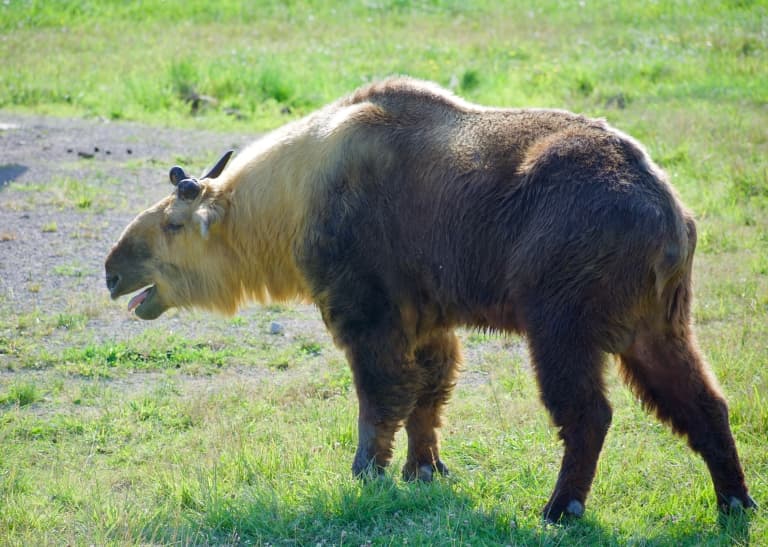
10. There are four subspecies of takin
The Sichuan takin has three similar family members, the Bhutan takin, Mishmi takin and Golden takin.
Together they are 4 subspecies of takin, sometimes called the ‘cattle chamois’ or ‘gnu goat’.

The Golden Takin can be seen above.
11. Female and male takins will reach sexual maturity at different ages
The female Sichuan takin reaches sexual maturity by four and half years old. However, the male does not reach maturity for up to a year later, making them around 5 and a half to six years old.
12. The colour of the Sichaun takin coat is believed to inspire a legend
The golden colour of the Sichuan takin’s coat is believed to be the inspiration behind the legend of Jason and the story of the golden fleece in Greek mythology.
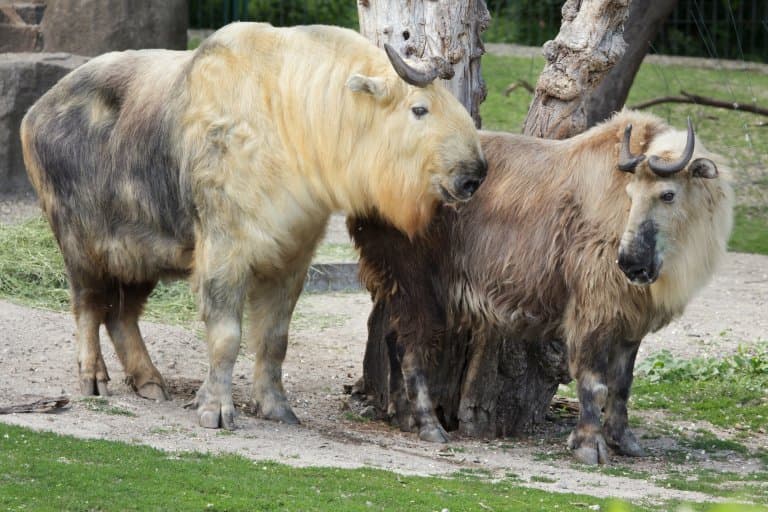
13. Best population estimations are between 7,000 – 12,000
There’s never been an official population count made of the Sichuan takin, as they are extremely difficult to assses, due to their high elevations in rugged mountain terrain.
However, best estimates seem to agree to be around the 10k figure in the wild and the IUCN classify them as vulnerable due to destruction of its natural habitat, climate change and poaching.
Sichuan Takin Fact-File Summary
Scientific Classification
| Kingdom: | Animalia |
| Phylum: | Chordata |
| Class: | Mammalia |
| Order: | Artiodactyla |
| Family: | Bovidae |
| Genus: | Budorcas |
| Species Name: |
Budorcas Taxicolor Tibetana |
